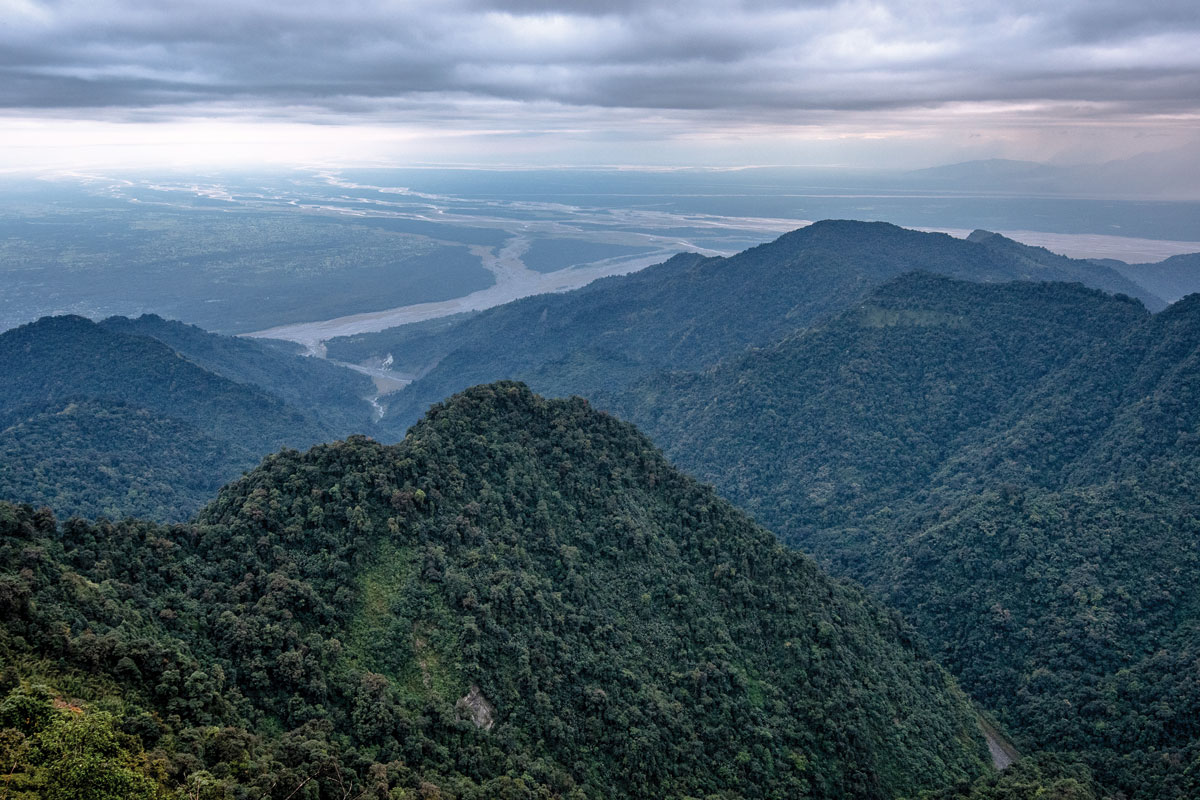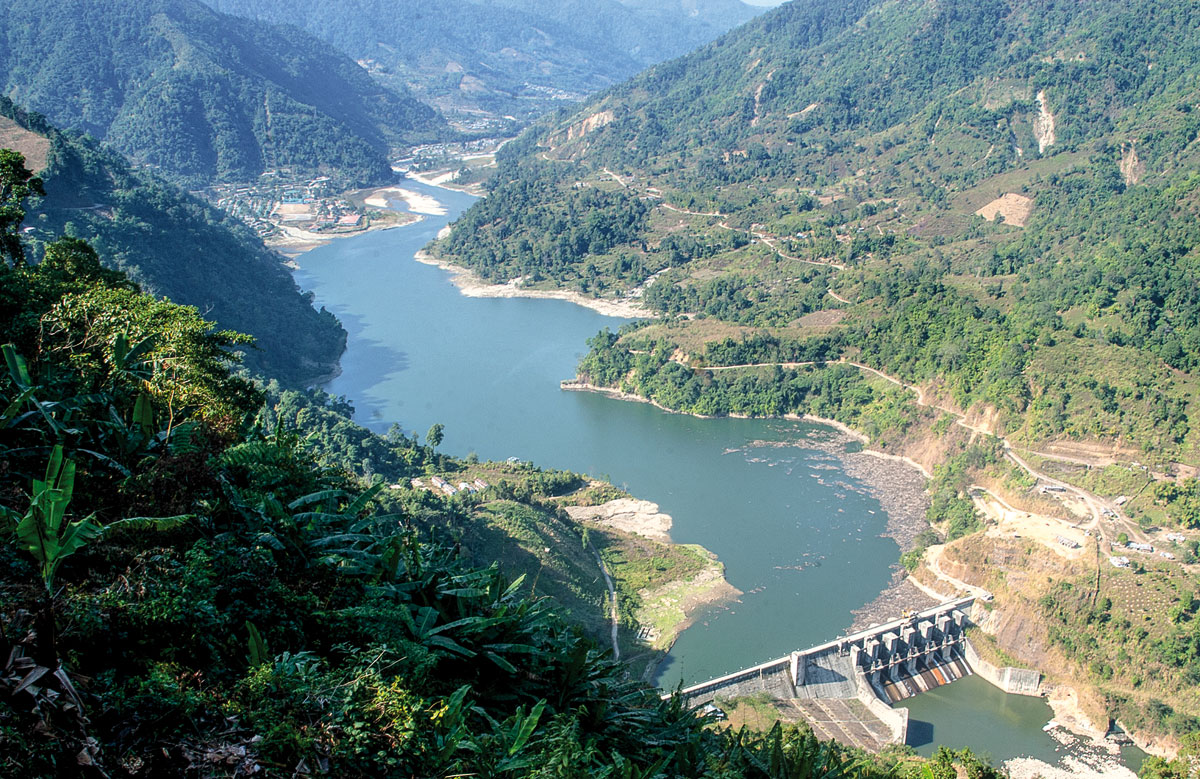Let Rivers Flow Free: The Case For Decommissioning Dams In India
First published in Sanctuary Asia,
Vol. 43
No. 10,
October 2023
Text by Bhavya Iyer
A Seismic Blunder?
The Dibang river originates in the Mishmi Hills of Arunachal Pradesh and winds through a steep, rolling valley before forming braided channels in its lower reaches, eventually joining the Lohit river to form the Brahmaputra, a lifeline for the region. The Dibang valley is home to dense forests and unique wildlife, from the hoolock gibbon and Mishmi takin, to the clouded leopard and Sclater’s Monal. Yet on the Dibang river alone, more than 17 hydropower projects are in various stages of planning.
Nearly 80 per cent of Arunachal Pradesh is covered in dense forests situated on a rocky base – the state lies in Earthquake Zone 5 (the regions with highest risk of suffering a major earthquake). Despite this, about 150 hydropower projects have been proposed in the state. A major hydropower project planned on the Dibang river has been facing immense public resistance since 2008, over what is seen as mindless development that could have disastrous implications for the ecological security and safety of the state and downstream areas, which include parts of Assam. The proposed Dibang Dam would have installed capacity of nearly 3,000 MW of power. In comparison, the current largest hydropower capacity project, the Nathpa Jhakri project in Himachal Pradesh, has an installed capacity of 1,500 MW.
The rationale of constructing dozens of mega dams in a seismically hazardous zone is questionable, especially when large hydropower projects are no longer economically viable (their social or ecological viability were always a big question mark), and the private sector is no longer interested in them. These projects are even more unviable considering the changing climate implications. Meanwhile, a proposal for an 11,000 MW project on the Siang river in Arunachal, was submitted in January 2023.
What do we lose when we dam rivers, and block river valleys, stemming the flow of river water flows, silt flows, biodiversity flows and everything else that flows in the river, with mountains of mortar and cement? India’s first Prime Minister Jawaharlal Nehru regarded dams as an integral part of nation-building, referring to the dams built in the early years after Independence as the ‘Temples of Modern India’. In an era of big dams, these grand feats of engineering were foolishly considered a symbol of human power to control and channel nature. Nehru himself changed his opinion a few years later, saying that such big projects reflected “a disease of gigantism”. Prayers can be effectively offered even at smaller places of worship!

The Dibang valley is home to dense forests and endemic wildlife, from the hoolock gibbon and Mishmi takin, to the clouded leopard and Sclater’s Monal – all threatened by more than 17 hydropower projects in various stages of planning and implementation on the Dibang river. Photo: Saurabh Sawant.
Costs Exceeding Benefits
For decades, dams have been built, bigger and bigger, ostensibly for irrigation, hydropower generation, water storage and supply, and flood control. The acceptable collateral – loss of natural habitats, from forests to open natural ecosystems (ONEs), relocation of people from project sites and increased poverty in dam districts, greater disaster potential both in the upstream, at dam sites and the downstream, river erosion on account of a lack of sediment flow besides tunneling, blasting and deforestation, impacts on water security and flooding, and obstructions to wildlife movement and natural habitat movement. Himalayan rivers are being increasingly eyed for their ‘hydropower potential’, with India using the supposedly-green source of energy to fulfil global commitments to reduce carbon emissions. However, expert after expert warn that these claims are unfounded, these projects could spell multiple disasters for the fragile mountain ecosystems, with dams being held responsible for increased flooding, land subsidence and landslides in mountain states such as Arunachal Pradesh, Himachal Pradesh and Uttarakhand.
These impacts have, until recently, been seen as worth the ‘benefits’ from the building of dams. However, the advantages of dams, especially large ones, are now being called into question, with hydropower projects failing to fulfil their promised benefits and delivering unpromised disasters, dam-building exacerbating flood damage, and the destruction of forests increasing habitat loss and fragmentation and heightening human-wildlife conflict. The decreasing per unit cost of alternatives like solar and wind power, much less than that of hydropower, further calls into question the rationale of mega hydropower projects.
Back To Nature
A movement to ‘rewild’ dams by tearing them down – in a systematic, step-wise, scientific manner – and restoring erstwhile riparian habitat has been growing across the globe. Rewilding Europe, a citizen-led NGO, is leading a movement for removal of dams and habitat restoration across Europe, resulting in 325 dams being removed across Europe in 2022 alone and over 2,000 removed in USA over the last decade or two. Dam removals in various countries – the Elwha Dam in USA, a dam on the Gudenå river in Denmark, the Maisons-Rouges Dam in France – have shown a resultant recovery in biodiversity and fish numbers. Dam decommissioning is also cheaper, safer and more beneficial than maintaining ageing and obsolete dams. Dam removal, especially for large ones, can take years to safely carry out, as the original river channel must be excavated, built-up sediment must be carefully released, and layers of the dam must be removed to allow water levels to drop. However, case after case shows the benefits accrued to nature and local communities by the removal of dams, from habitat restoration to fish stock recovery, wetland revitalisation, improved safety of downstream and upstream habitats and increased biodiversity.

A dam on Arunachal Pradesh’s Ranganadi river. Himalayan rivers are being increasingly chosen for their ‘hydropower potential’, despite warnings that these projects could result in multiple disasters for the fragile and biodiverse mountain ecosystems. Photo: Samsul Huda Patgiri.
Dammed If We Don’t
Let’s rewind – India has over 5,300 large dams. A large dam is one with “a height of at least 15 m. from its deepest foundation to the crest”, according to the Central Water Commission (CWC). This makes India the country with the third highest number of large dams, after China and USA. But what about dams under this 15 m. threshold? The Ministry of Water Resources and CWC has no data on small dams and minor irrigation dams. One article reports over 70,000 small dams and irrigation projects in Maharashtra alone (less than 12 per cent of the irrigation potential of which is utilised). In comparison, USA has roughly 91,000 dams across the country. Over 234 of our large dams are over 100 years old, and their safety is in question. By 2025, India will have over 1,000 large dams over 50 years old. Most dams constructed at the time had a lifespan of 50 to 100 years, posing significant safety risks to downstream communities. The potential for dam removal and habitat restoration in India is massive. Removing these dams, starting with the defunct and ageing ones, would not only restore vast swathes of habitat and help revitalise wetlands, but also provide rural employment, increase ecotourism potential, and improve fisheries.
In USA, thousands of dams have been removed in the last 50 years. Europe is in the middle of a waterway revitalisation movement through citizen-led dam decommissioning and habitat restoration. The era of large dams has passed, and the time to rewild riparian habitats is here. With so many obsolete dams, and no dearth of funding available for habitat restoration and rewilding at the global stage, India is primed to lead the way in this movement, and should not let go of this opportunity.
What You Can Do
. Keep up to date on planned mega hydropower projects in your region, participate in the public hearing process for these projects wherever possible and learn about the various ways in which other countries are making a successful transition from mega-dam dependence.
. Consider what local and Indigenous communities have to say about such projects, whether they will lose their lands, livelihoods or forests, and help amplify their voices through social media. Support local communities, use the Right to Information Act to get information about existing large dams.
.Write to your civic representatives and state and union environment ministers and convince them that mega hydropower projects are not green energy, and will do more harm than good. Rather than focusing on destructive mega projects, we should focus on small-scale electricity generation such as rooftop solar and smaller run-of-the-river hydropower projects and work towards restoring and rewilding our rivers and streams.



